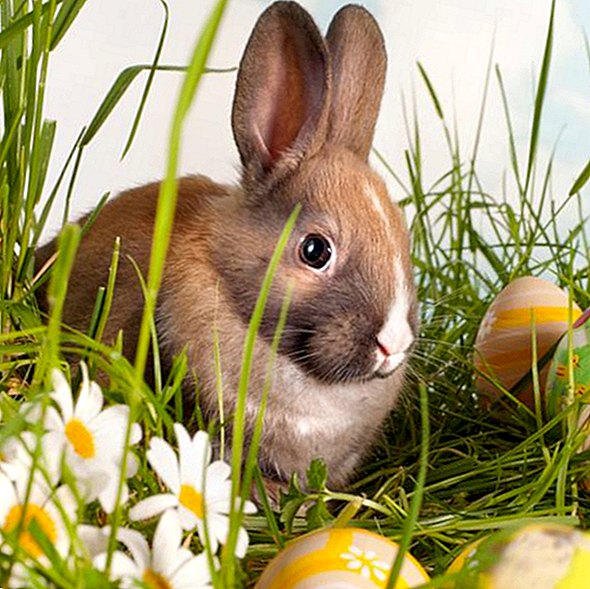Easter bunny: origin and meaning

Why the rabbit?
The Easter bunny is a symbol of Easter. Especially children are looking forward to the painted eggs that the Easter bunny brings and hides. There is indeed countless variants about the origin of the Easter Bunny.
The first written mention of the Easter Bunny, the eggs hidden in the garden, comes from 1682 from a scientific work of the professor of medicine Georg Franck von Franckenau, Here he warns the people against too high egg consumption. But where does the motive of the rabbit come from? Here are the most popular theories.
Pagan festival
The Germanic spring goddess Ostara was assigned to the hare as a sacred animal. He was considered by his proliferation as fertility symbol. Even today, the etymological relationship of the word "Easter" with the spring goddess "Ostara" (whose name goes back to "Eostre") is debated.
Origins in antiquity and Christianity
Whether on sound lamps or mosaics? the rabbit's motive can be found in many examples in ancient art and architecture. Here he was considered a symbol of life and rebirth. From the late Middle Ages, the hare and the egg became the symbol of the resurrection of Jesus Christ and thus acquired a Christian meaning.
The hare is considered a moon animal
Easter is celebrated on the first Sunday of the spring full moon. If you look at the moon, you can see with imagination a lying rabbit.
A "baked" Easter lamb
Another variant to the origin of the hare is about the failed Easter bread. Traditionally, an Easter bread was baked at Easter, which should have the shape of a lamb. But a legend tells that in the oven, the Easter lamb deformed and finally looked like a hare. Thus, the Easter Bunny should have established.
Why the egg?
That the Easter bunny brings the children the colorful eggs, is told since the 17th century. But the custom of "egg-making" existed earlier.
Above all, above all birdshow the stork or the cuckoo brought the paschal gifts. They were said to have flown to Rome on Maundy Thursday to pick up the Easter eggs and return on Holy Saturday to distribute the eggs randomly. Easter Sunday is supposed to be the big day when the children are looking for Easter eggs. Ultimately, the hare prevailed in the 19th century as a symbol of Easter. But even in the story of the Easter egg, there are several theories.
So a story goes back to the pre-Christian era, in which the egg for Life or one source of life stands. The church adapted to this belief. Thus, even in the Christian understanding, the egg is a symbol of life and stands for the resurrection of Jesus. Since the 4th century is also the so-called Eiweihe to prove, in which the egg is blessed and fertility was awarded.
Why colorful eggs?
Dyeing and painting eggshells is older than the Christian tradition. For example, painted ostrich eggs were found in ancient tombs of Egyptians and Sumerians.
Later, the early Christians dyed the eggs exclusively red to indicate the blood shed by the resurrected Jesus. In various cultures, the three-hare image appears again and again, which was painted on many Easter eggs. Behind the three rabbits on the three-hare picture the meaning of the Trinity is understood. Incidentally, the rabbit motif occurring here can also be a source of Easter hare.
From the 12th century, the Easter eggs were colorfully painted and decorated. Speaking of which we have great ideas for the Easter nest to imitate: Dye eggs and blow eggs. At Easter, there are other Easter traditions in addition to the Easter bunny and the eggs. Read more about this here: Easter customs and their meaning.
You can find even more Easter decorations for Easter on our Pinterest pin board. You can also put cute Easter sayings or money gifts in pretty DIY Easter cards. Let yourself be inspired by even more ideas and instructions.
Videotipp: It's so easy to make an Easter basket











